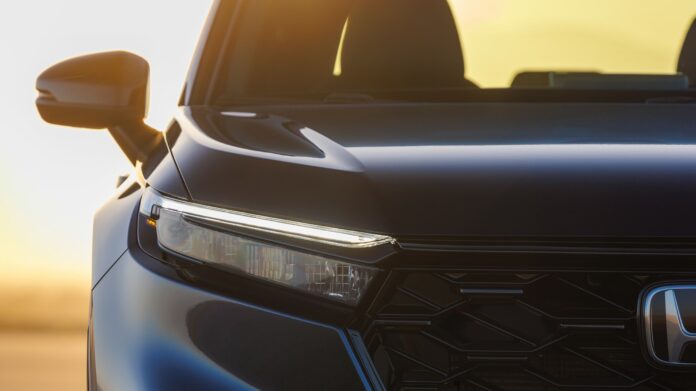Honda has cast its die in the great debate on whether electric or hydrogen fuel cell vehicles are the future of emissions-free transportation, announcing it will produce its first vehicle with fuel cell technology in 2024.
The car will be a variant of the popular CR-V, and it will be produced in Ohio. Honda has not yet released additional details or photos of the vehicle.
“As we accelerate our plan to produce Honda battery EVs in the United States, we also will begin low volume production of fuel cell electric vehicles there to further explore their great potential as part of a sustainable transportation future,” Honda says(Opens in a new window). “As America’s best-selling CUV of the past quarter century, the Honda CR-V will provide an excellent foundation for a FCEV.”
(Credit: gchutka / Getty Images))
FCEV stands for “fuel cell electric vehicle,” as an on-board hydrogen tank will charge the battery. But unlike most fuel cell cars, such as the Toyota Mirai(Opens in a new window), Honda’s new FCEV will be a plug-in hybrid that can power up with a port on the side of the car, like a typical EV, and from the hydrogen tank. It will not use any gasoline.
“The new CR-V-based FCEV marks North America’s first production vehicle to combine a plug-in feature with FCEV technology in one model, which enables the driver to charge the onboard battery to deliver EV driving around town with the flexibility of fast hydrogen refueling for longer trips,” Honda says.
It takes about five minutes to refill a hydrogen tank at a pump, making FCEVs more similar to gas-powered vehicles than other EVs in practice. Unlike gasoline, FCEVs emit only water vapor and are thus considered a clean, zero-emissions drive.
The catch: the US has even less hydrogen pump infrastructure than it does EV chargers. In our exploration of the potential for FCEVs, we found there are about 400 hydrogen fueling stations worldwide. The US aims to have 1,000 online by 2030, compared to tens of thousands of EV charging stations and many more on the way. That may be why Honda’s first fuel cell vehicle, the 2002 FXC, stopped production in 2014.
Recommended by Our Editors
(Credit: Andriy Onufriyenko / Getty Images))
But with the new CR-V fuel cell hybrid on the way, it seems Honda is still convinced—as many are—that FCEVs are a promising technology for cleaner transportation. Honda has invested $14 million in California’s hydrogen refueling network this year, kicking off an effort to “research and identify cost-effective solutions to deploy infrastructure that can deliver affordable, clean hydrogen fuel in the United States.”
The introduction of an FCEV is Honda’s latest avenue for experimentation on the road to its goal of selling 100% electric and fuel cell vehicles by 2040. In October, it unveiled its first all-electric SUV, the 2024 Prologue. It also inked a new partnership with Sony to create entertainment-rich EVs.
Honda has recently made strong investments in battery technology, purchasing a battery plant(Opens in a new window) in Ohio last month, as well as teasing a super fast-charging “solid state” battery by 2030.
Get Our Best Stories!
Sign up for What’s New Now to get our top stories delivered to your inbox every morning.
This newsletter may contain advertising, deals, or affiliate links. Subscribing to a newsletter indicates your consent to our Terms of Use and Privacy Policy. You may unsubscribe from the newsletters at any time.
Hits: 0


















